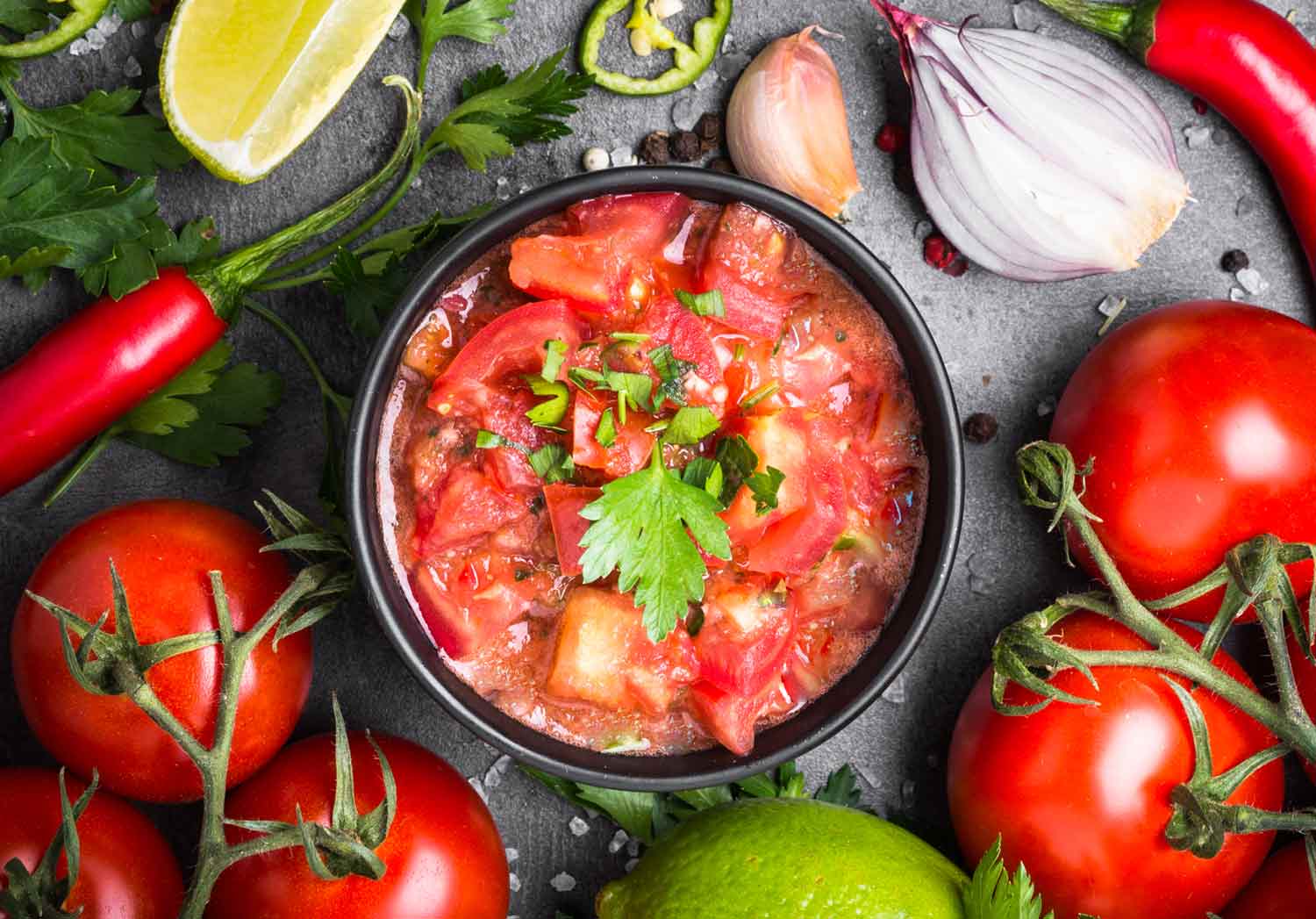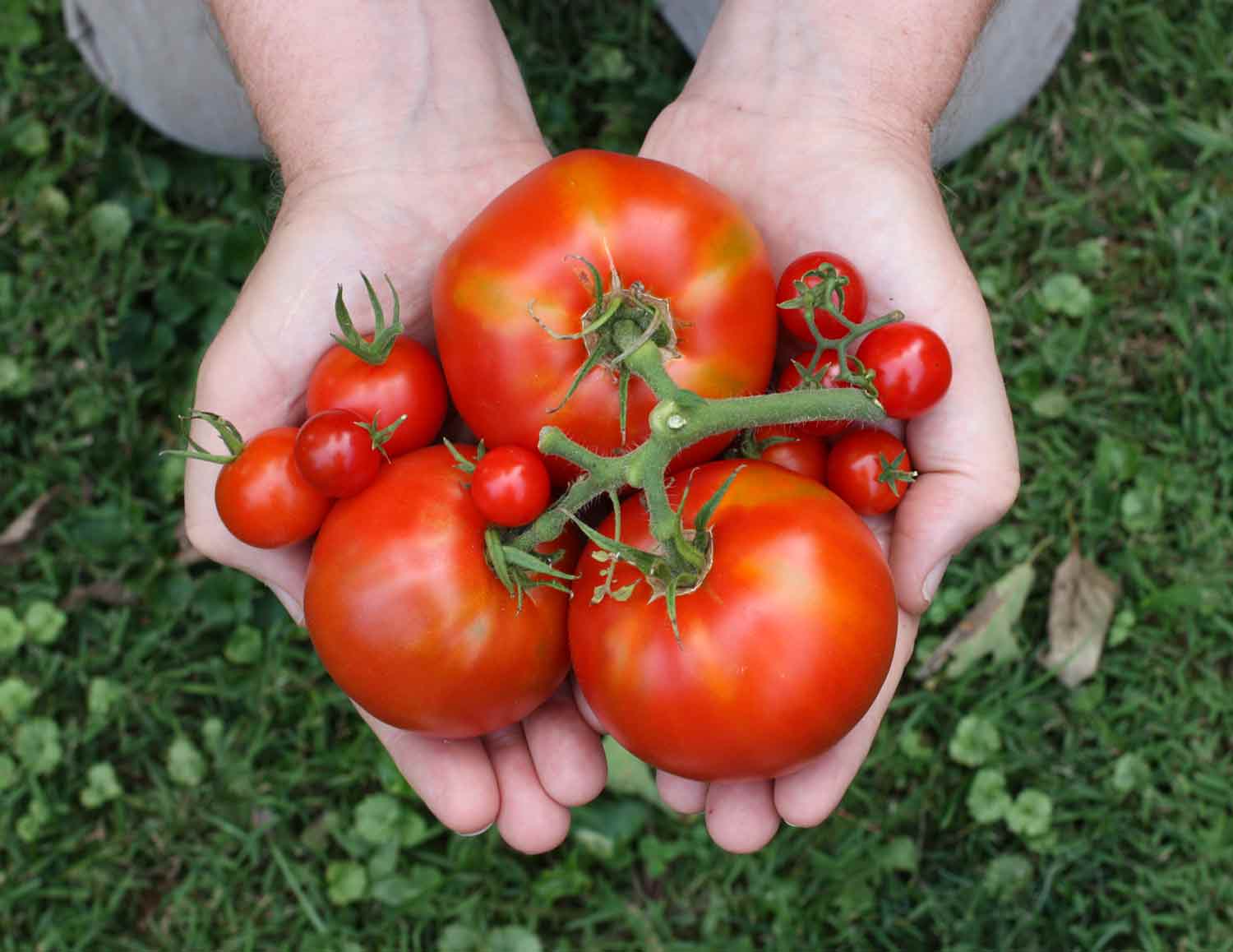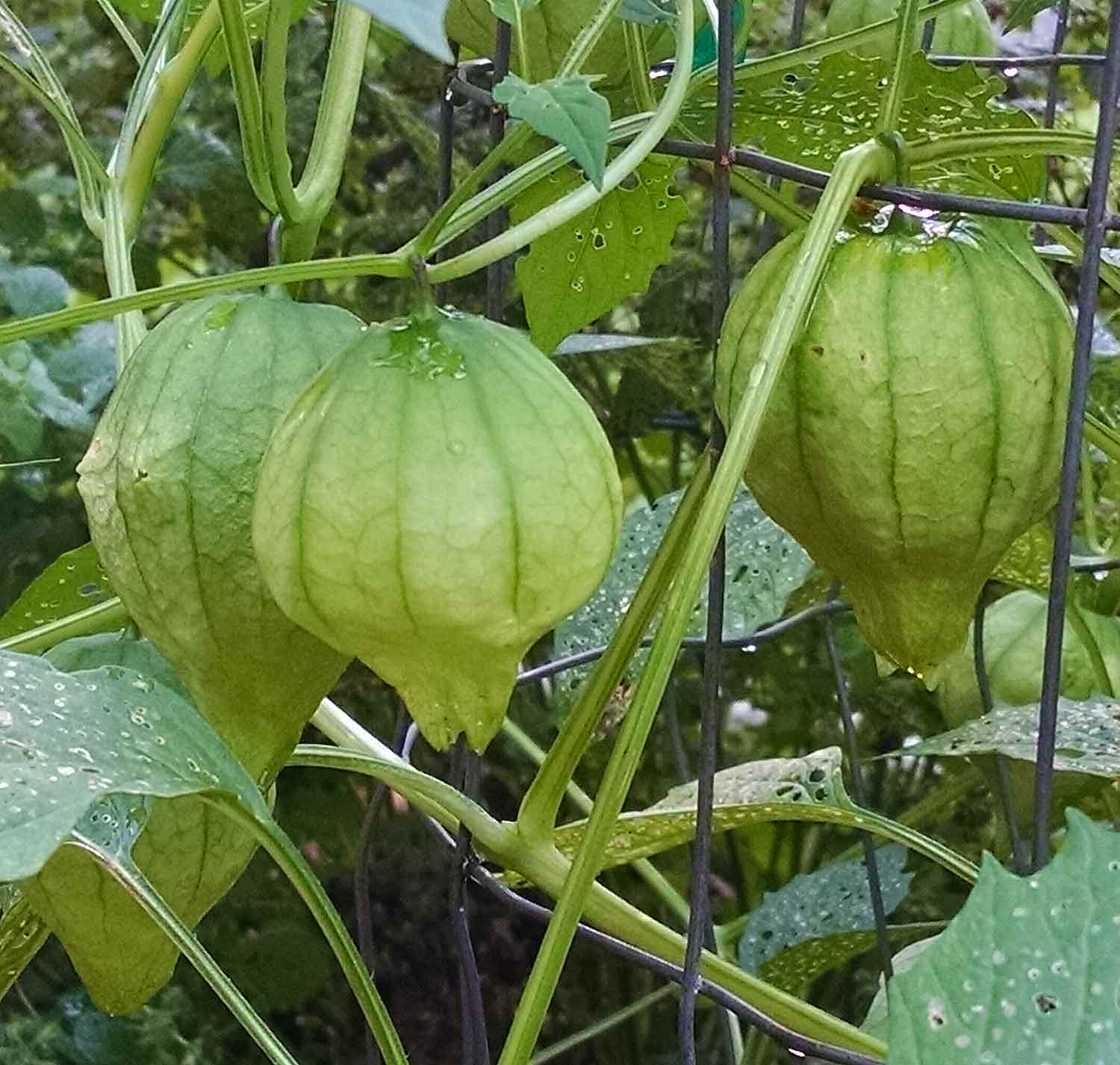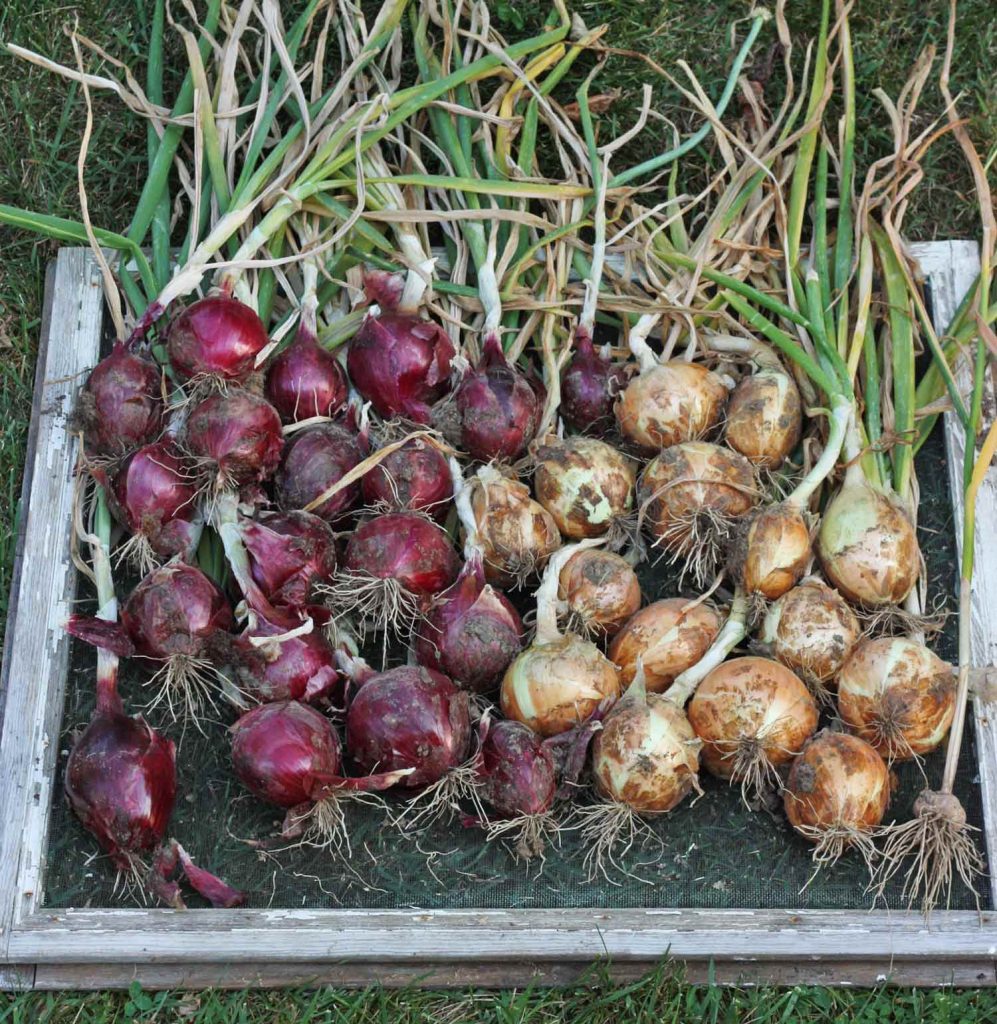A salsa garden brings together the essential ingredients needed to make delicious homemade salsa in the summer. Not only does it offer a fun and functional gardening project, but it also provides the freshest possible ingredients for your culinary creations. This article will guide you through how to grow a vibrant salsa garden, exploring everything from selecting the right plants to spacing to harvesting. Whether you’re a novice gardener or an experienced green thumb looking for a new project, grow a salsa garden and enjoy a spicy twist on traditional gardening.

There’s so much to love about summer salsa, far beyond the satisfaction of the bright, savory bite on a tortilla chip or taco. As an avid soup chef, I have an immense appreciation for recipes that come together quickly with minimal fuss during the lazy days of summer.
And then as a gardener, I also value dishes with fresh flavors that let homegrown produce shine. Salsa checks all of those boxes and more.
A salsa garden is more than just a trend. It’s a practical way to maximize your garden’s productivity while giving focus for the fruits you’re growing.
The idea is simple: instead of planting a random assortment of vegetables, you can dedicate a portion of your garden to the specific ingredients that make up salsa. It will give your growing efforts added purpose, and you’ll be rewarded with a ready supply of fresh ingredients for your favorite salsa recipe.
Let’s get to it!
The Roster, plus Harvest Timing
One thing to be aware of with a salsa garden is that not everything is going to ripen at the same time. It’s not a huge problem — with one exception — because everything will overlap eventually, and fresh salsa becomes a delicious reality for a month or two.
The one exception is cilantro. Cilantro loves heat … for producing flowers and seeds but sadly not tasty leaves. Cilantro as a leafy green herb reaches its peak in the cool spring and then switches from producing leaves to sending up flower stalks.
Cilantro lovers will have to either take extra steps to have leafy green plants in August, or just buy fresh from the store. It’s okay. You don’t have forfeit your hard-earned vegetable gardener creds at the grocery store cash register. We’re all in the same boat.
So, here’s the roster of salsa vegetables (and herbs) and their approximate harvest times, so you can plan for that glorious overlap and endless bowls of fresh salsa.
I’m also including my suggestion for the number of plants to grow, and why.

Tomatoes, Roma or Paste
Roma-type tomatoes are preferred by some for salsas because of their heavy density and low water ratio. But, as a gardener, there’s one thing to keep in mind: most romas are determinate tomato plants, which means the entire crop grows and ripens more or less all at once.
Which means you’ll have a load of tomatoes, convenient for making large batches of salsa and other tomato products. But once the plant is done, it’s done. You can expect harvest in July or August.
Number of plants: Depending on your anticipated salsa cravings — and factoring in other uses for your tomatoes, such as sauces and pastes — you’ll probably want to grow 2 to 3 plants. Mix and match with standard tomatoes below. The minimum you’ll need is one plant: tomatoes are self-pollinating, so you don’t have to worry about having multiple plants near each other.

Tomatoes, Standard
Beefsteak tomatoes and other meaty varieties, such as Cherokee Purple, also make amazing salsa. These varieties tend to be indeterminate, which means they’ll continue to produce fruit right up until something kills the plant (say, the first frost of fall).
Indeterminates usually ripen later than determinates, but have a much longer season to enjoy these yummy treasures. Expect a preliminary harvest in mid to late July, followed by an abundance starting in August through first frost.
Number of plants: Depending on your anticipated salsa cravings — and factoring in other uses for your tomatoes, including Caprese salads and tomato sandwiches — you’ll probably want to grow 2 to 3 plants. Mix and match with the paste tomatoes above.
The minimum you’ll need is one plant: tomatoes, like all nightshade vegetables, are self-pollinating, so you don’t have to worry about having multiple plants near each other if space is an issue.

Tomatillos
Tomatillos are must-haves for salsa verde (green salsa). They share a bit of their name with tomatoes, and they definitely resemble green tomatoes (although note that they grow within a papery husk that you remove before using the tomatillo).
Tomatillos are firmer, tarter, and fruitier than their tomato counterparts and can be used raw or roasted for salsas.
You can expect an abundant harvest in August.
Number of plants: Two: A single tomatillo plant will produce a decent amount of fruit, but you’ll need a minimum of two plants, set near each other, for proper pollination.

Jalapeños/Serranos
The jalapeno is my preferred pepper for salsa, as it has the kind of moderate heat that most people can get behind, both spice lovers and spice haters. Serranos are a notch up on the Scoville heat scale and are also quite lovely.
Of course, chile pepperheads can absolutely substitute any chile pepper plant for the jalapeño, as they all have similar growing requirements. Or grow more than one variety if you love your salsa on the pepper-heavy side!
Peppers will produce throughout the season, and if you got a good jump on plant production in the spring, you can expect the first ripe peppers in July, with ongoing harvests right up until fall.
Number of plants: Like their nightshade tomato cousins, pepper plants are self-pollinating, so you can grow just one plant. Jalapeños and serranos are fairly prolific plants, and I find that one plant takes care of all my spicy cravings.

Poblanos
As an alternative to – or in my case, in addition to — jalapeños, the poblano pepper is a lovely alternative to the spice of chile peppers. Poblanos are often marketed by seed growers in the “hot” category, but in my experience (even from the grocery store), poblanos are usually mild.
I like to include them in my salsas as a replacement for the more boring bell pepper. Don’t get me wrong, I love bell peppers, but poblanos have a little extra flavor character and add a more pepper-y vibe to salsas.
Note, however, that poblanos tend to need more time on the vine to fully mature, so you might want to grow another pepper targeted for salsa, such as a bell pepper or a jalapeño, to tide you over until the poblanos are ready to pick in mid to late August.
Number of plants: Poblanos are also self-pollinating and, in my experience, very prolific, so one plant is good for me.

Onions
Onions add such a lovely peppy zip to salsas and pico de gallos. Just about any onion will do: white, yellow, sweet, red. Or mix and match, as they can be interplanted together. Each onion type has slightly different qualities — e.g., red onions are usually stronger and more astringent than yellow — but all are wonderful for salsa.
Onions are ready to harvest when their tops fall over, and that can begin occurring as early as June, depending on spring’s warmth.
After harvesting, cure the plants in a shady, cool spot for a week or more. This allows the protective papery covering around the bulb to stiffen and set. Store your cured onions in a cool, dry spot in your home, such as a dry basement.
They should last all summer long, as your other salsa vegetables begin to ripen.
Number of plants: When cured properly — i.e., when allowed to dry to form a protective papery outer layer — onions can last for quite a while in a cool place, depending on the variety, so while you’re growing onions for salsa, you might want to throw in some extra plants for every day cooking.
You can buy bundles of onion sprouts at the garden center, usually packed 20 to 30 per bundle. Buy a bundle, plant as many as will fit in the space you’ve allotted (leave about 12″ of space around each onion), and maybe give the rest to a fellow gardener or local community garden.

Garlic
Salsa isn’t salsa without freshly crushed garlic. And homegrown garlic is ever so lovely — it’s one of my favorite crops, right behind tomatoes. If this is your first season growing a salsa garden, note that it’s too late for garlic this year. So, plan on buying a few bulbs from the store or your local farmers market.
But you can prepare for your salsa garden next year because garlic, in most regions of the U.S., is planted in the fall for an early summer harvest. (Learn more about growing garlic.)
If you already have garlic growing in your garden, you’re in great luck! Your garlic harvest will just precede your tomato harvest and will be ready for salsas galore.
Garlic is ready to be harvested when the leaves on the plant brown about 1/3rd of the way down the plant. Like onions, you’ll need to cure the harvested plants so that the bulbs set, encased in their protective wrappings.
Number of plants: Each garlic plant will produce one garlic bulb that contains a number of cloves. Like their onion cousins, garlic bulbs should be cured before use.
For most salsas, you’ll need just one or two cloves at a time. If you’re careful when removing the cloves from the bulb to keep the papery covering intact, the partially used bulb can sit on your counter for a week or more.
So, the number of plants you grow will also depend on the amount of garlic you like to cook with overall. Keep in mind that most hardneck varieties will store for 6 months or longer, which will get you into soup season!

Cilantro
As mentioned, cilantro is a cool-weather plant that will need to be protected from the sun and heat for as long as possible. Learn more about growing cilantro.
Number of plants: Cilantro is a cut-and-come-again herb, which means you only need to harvest what you’ll need in the moment — say, a stem or two — rather than pulling the entire plant all once. For the average cilantro user, two or three plants should suffice. For the cilantro aficionado, four or five.
Salsa Garden Layout
I’m going to go against expectations here and be a little loosey-goosey about a literal, specific-usage salsa garden bed.
The reason is two-fold:
1. Garlic: In most areas of the U.S., garlic needs to be planted off-season, and if you’re building your salsa garden for the first time this spring, you won’t have homegrown garlic this year. In most areas here in the U.S., garlic is actually planted late in the fall, before the first frost, and it grows the following spring for an early summer harvest sometime in June.
So, garlic largely is out of the way by July — you might not want to group it with your other vegetables, as that area will be empty for most of the regular growing season and could’ve been used for something else.
One idea, though, is to grow a few garlic plants in your salsa garden, and then plant the rest elsewhere in a bed that can be earmarked for a late summer crop, such as broccoli or cauliflower.

2. Cilantro: If you love cilantro in your salsa, know that cilantro is distinctly a cool-weather herb. It grows lushly in the spring, but as soon as the least bit of heat sets in, it wants to flower and produce seeds.
There are slow bolt varieties, which can extend harvest by a month or so, but even that reprieve doesn’t take us very far into mid-summer, when all of the other goodies, such as tomatoes and peppers, are ripening.
In other words, you definitely don’t want to plant cilantro in a full-sun garden bed with your other salsa vegetables. You won’t get very far into June that way.
Some gardeners in slightly cooler climes recommend constant reseeding of cilantro to grow new plants, called succession seeding. Succession seeding can be very successful with some crops, such as carrots, but in my experience, once the heat of summer lands, as it does here in the Midwest, cilantro is very reluctant to grow at all, even as a young plant.
Your best bet, then, would be to grow cilantro indoors in the A/C, in a sunny window. I have some luck growing cilantro outdoors in containers, which I can either move into the shade during the heat-height of the day or drape a shade cloth over the top. It still doesn’t get me into August, though, which is a bummer.
I said it above and I’ll say it again: It’s perfectly fine to buy fresh cilantro from the grocery store! I have to buy limes anyway, so there’s no shame in the store-bought cilantro game.
As an alternative, if you’re okay with a little flavor adventure for your salsa, you can grow flat-leaf Italian parsley or Mexican oregano instead, which thrive in the summer heat.
Below is a possible layout for your salsa garden. Note that the garden is ordered according to plant size. The tallest and gangliest plants are in the “back” — the back being farthest from the sun — while the shortest plants are upfront and won’t block sunlight from anything behind them.

It can be a little tough to judge spacing when plants are small, but be sure to space tomatoes, tomatillos, and peppers far enough apart so that you can actually get to the plants, and stake and trellis them as needed.
Frequently Asked Questions about Salsa Gardens
How much space do I need for a salsa garden?
It depends on how many of each plant you want to grow. In general, one tomato or tomatillo plant needs around 2 to 3 square feet for growth and staking room, while pepper plants need about 1.5 square feet each.
Onions and garlic should be spaced 10″-12″ apart to leave room for weeding.
Can I grow a salsa garden in containers?
Yes, all of the plants needed for a salsa garden can successfully be grown in containers! This is a great option if you don’t have a lot of outdoor space or if your soil is not suitable for in-ground gardening.
Make sure to choose containers that are large enough for each plant’s mature size, and use a high-quality potting mix. (Learn more about container gardening.)
What about limes? Can I grow limes at home?
The answer is an enthusiastic, but cautionary, yes. Lime trees require constant year-round heat and are not appropriate outdoors for most growing zones in the U.S.
However, citrus trees CAN be successfully nurtured indoors in containers. I have tried to grow a lime tree and a blood orange tree, both of which failed spectacularly. However, I have a friend here in the city with a citrus-thumb who has grown a very impressive Meyer lemon tree in her living room for years.
You’ll need to order a tree from a reputable source, and follow their care guides to a “T”, but yes, it’s entirely possible to grow limes.

I hope this article inspired you to try a salsa garden of your own. Whether you’re a seasoned gardener or a beginner, the joy of biting into a fresh salsa made from vegetables and herbs you’ve grown yourself is an experience worth cultivating.


 Welcome! I'm Karen, Chief Gardener, Tool Cleaner, Tomato Pruner, and Cabbage Worm Picker-Offer.
Welcome! I'm Karen, Chief Gardener, Tool Cleaner, Tomato Pruner, and Cabbage Worm Picker-Offer.
Leave a Reply